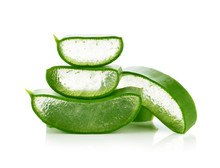IS ALOE VERA REALLY GOOD FOR YOUR SKIN?
 From Andrew- Is Aloe Vera great for the skin? Aloe VeraWell Andrew, that’s a good question, though the answer depends upon the person you ask. There are numerous naturopathic healers who are very enthusiastic about its use to take care of several conditions between sunburns, psoriasis, osteoarthritis, high cholesterol levels, into a cure for stretch-marks. It can be seen in lots of skin products which might be available, usually available as lotions and sunblocks. The ancient Egyptians were using Aloe Vera around 4,000 BC where it absolutely was called the “plant of immortality”. Medical doctors have another opinion for the matter. If you had been to question them about uses of Aloe, the response would most likely be, “there isn’t enough scientific evidence showing it’s a fair answer to anything”. Given the larger variety of products available and anecdotal evidence seemingly supporting its use, I’m one medical doctor that finds that it is hard to argue Aloe doesn’t work on all, but let’s go through the evidence. There are two substances the Aloe Vera plant produces which are used as medicines- gel and latex. The gel could be the clear, jelly-like stuff present in the center on the plant’s leaves. Surrounding the gel, just below the plant’s skin, is often a yellow material often known as latex. There are some medicines which can be constructed from the complete crushed leaf that includes both gel and latex, but generally latex is taken orally as well as the gel is normally used topically. Although some claim taking gel orally has benefits. The Aloe gel itself contains glycoproteins and polysaccahrides. Glycoproteins can help out with healing by reducing inflammation and stopping pain. Polysaccahrides assist with skin growth and repair. It’s also thought both of these substances help stimulate the body's defense mechanisms. It doesn’t appear too farfetched then to imagine an array of ways to use different diseases and scenarios. Many people keep making bold claims due to these four elements within the plant. The scientific tests, however, have established an array of contradictory results, prompting most governing medical bodies to classify Aloe’s use as “needing more evidence” before they may endorse it. The National Center for Complementary and Alternative Medicine (NCCAM) lists only two recognized great things about Aloe. The first is like a laxative. That being said, the FDA employed to allow the usage of oral Aloe latex as being a laxative, but suspended it in 2002 because animal studies showed high doses could potentially cause cancer. This can be a real concern because doing so takes increasing doses with time to own desired affects. The second benefit is as being a topical gel to help heal burns and abrasions. They are quick to say, however, that some research the gel might just inhibit the healing of deep surgical wounds. As such, the sole FDA approved by using Aloe is to be a natural food flavoring.
From Andrew- Is Aloe Vera great for the skin? Aloe VeraWell Andrew, that’s a good question, though the answer depends upon the person you ask. There are numerous naturopathic healers who are very enthusiastic about its use to take care of several conditions between sunburns, psoriasis, osteoarthritis, high cholesterol levels, into a cure for stretch-marks. It can be seen in lots of skin products which might be available, usually available as lotions and sunblocks. The ancient Egyptians were using Aloe Vera around 4,000 BC where it absolutely was called the “plant of immortality”. Medical doctors have another opinion for the matter. If you had been to question them about uses of Aloe, the response would most likely be, “there isn’t enough scientific evidence showing it’s a fair answer to anything”. Given the larger variety of products available and anecdotal evidence seemingly supporting its use, I’m one medical doctor that finds that it is hard to argue Aloe doesn’t work on all, but let’s go through the evidence. There are two substances the Aloe Vera plant produces which are used as medicines- gel and latex. The gel could be the clear, jelly-like stuff present in the center on the plant’s leaves. Surrounding the gel, just below the plant’s skin, is often a yellow material often known as latex. There are some medicines which can be constructed from the complete crushed leaf that includes both gel and latex, but generally latex is taken orally as well as the gel is normally used topically. Although some claim taking gel orally has benefits. The Aloe gel itself contains glycoproteins and polysaccahrides. Glycoproteins can help out with healing by reducing inflammation and stopping pain. Polysaccahrides assist with skin growth and repair. It’s also thought both of these substances help stimulate the body's defense mechanisms. It doesn’t appear too farfetched then to imagine an array of ways to use different diseases and scenarios. Many people keep making bold claims due to these four elements within the plant. The scientific tests, however, have established an array of contradictory results, prompting most governing medical bodies to classify Aloe’s use as “needing more evidence” before they may endorse it. The National Center for Complementary and Alternative Medicine (NCCAM) lists only two recognized great things about Aloe. The first is like a laxative. That being said, the FDA employed to allow the usage of oral Aloe latex as being a laxative, but suspended it in 2002 because animal studies showed high doses could potentially cause cancer. This can be a real concern because doing so takes increasing doses with time to own desired affects. The second benefit is as being a topical gel to help heal burns and abrasions. They are quick to say, however, that some research the gel might just inhibit the healing of deep surgical wounds. As such, the sole FDA approved by using Aloe is to be a natural food flavoring.